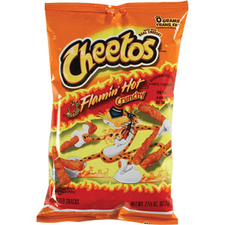
Forget about smartphones, cute football players and pretty cheerleaders, when it comes to classroom distractions, experts say parents should be more concerned with their kids’ empty stomachs.
A recent study published in Childhood Obesity found that the snacks tweens and teens bring to school to satisfy their grumbling guts are failing to make the grade when it comes to nutrition. In fact, according to experts, the popularity of the following snack foods is the reason many students suffer from behavioral problems such as hyperactivity:
Cheetos: No surprise here. One-ounce of the neon orange puffs contains 150 calories, 10 grams of fat and 250 milligrams of sodium. In other words, Cheetos are among the worst snacks you can send your kid to school with. Not only are they high in sodium, low in fiber, and made with that scary orange coating, which forms a sticky, putty-like substance that affixes to fingertips, but Cheetos also tempts kids to lick their dirty digits.
Pop-tarts: You may want to think twice before sending your child off to the bus stop clutching a Pop-tart. A single package of the breakfast treats contains 400 calories, 10 grams of fat and 32 grams of sugar. In addition, the toaster-friendly pastry also features a ton of refined flour, various sweeteners, and oil. As for the fruit most Pop-tarts claim to contain, in the majority of cases there’s less than two percent in each pastry. Researchers say you are better off sending your child to class with a bag of Teddy Grahams cookies, which contain fewer calories, less fat, far less sugar, and more fiber per serving than a cherry Pop-tart.
Skittles: So your child wants to “taste the rainbow” during recess? If you love your kid you won’t let him do so, experts warn. One seemingly innocent package of Skittles contains 250 calories, 2.5 grams of fat and 47 grams of sugar. More disturbing are the nine different artificial dyes that give the candy its trademark color, including yellow 5, which the Journal of Pediatrics linked to hyperactivity in children. By tucking a bag of Skittles into your child’s lunch bag you are basically leading him down the road to disruptive behavior.
Food for thought as you head down the aisles of the supermarket this week.
Related Articles:
Fast Food Kids’ Meals—How Healthy Are They?
Kids And Juice—Are They A Healthy Mix?
Is There Such A Thing As A Healthy Hamburger?

